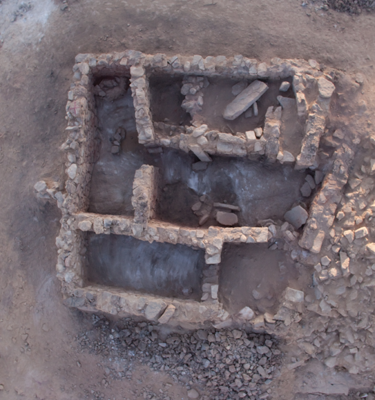AMMAN — Wadi Faynan was an ancient metallurgical centre that exported copper ore on the Mediterranean. Based on available evidence from historical sources and copper production site, tens of thousands of copper tonnes were exported during the Iran Age noted an American archaeologist.
“Understanding where that copper was traded to is difficult because copper was so valuable in the past that ancient people would have been very careful not to lose copper artifacts,” said Assistant Professor Matthew Howland from Wichita State University, adding that the team is starting to learn that copper from Wadi Faynan was traded around the Mediterranean Sea, including along the Mediterranean coast and as far as Greece and Egypt.
Howland worked on the Edom Lowlands Regional Archaeology Project, directed by Tom Levy and Mohammad Najjar, and his research at the University of California San Diego focused on the application of digital techniques of Cyber-Archaeology to record archaeological sites in Wadi Faynan in 3D and with GIS-based mapping, and on the long-distance exchange of copper.
“As part of this research, I have worked to share digital outputs online, including a StoryMap describing the archaeology of Wadi Faynan, which is published in Arabic here: https://storymaps.arcgis.com/stories/fadfbcb0c1ed447bb272eced3140f004,” Howland explained.
“My research, based on the study of pottery traded to Faynan from other regions, shows that there was an active trade network from Wadi Faynan to the Mediterranean coast. Most likely, copper would have been traded across the desert in the Wadi Arabah to the Mediterranean coast, where it would have been loaded onto ships and transported by sea,” the scholar underlined.
In return, elites in Wadi Faynan would have likely received fine clothes, foods and ceramics, which they used to show their high status in society.
Moreover, the metallurgical sites of the Wadi Faynan region are extremely important to understanding ancient copper production, Howland said, adding that over 150,000 tonnes of copper slag [the waste from copper production] is present at sites in the region, including important sites like Khirbat en-Nahas and Khirbat Al Jariya.
“This evidence shows that a highly-sophisticated and complex nomadic society existed in the Wadi Faynan during the Iron Age. Powerful elites managed a regional economic network that included copper production, provisioning of workers with food and water, and the exchange of copper for expensive goods. These elites dressed in the finest fashions, including purple dyed cloth, and ate expensive imported foods, like olive oil and fish from the Mediterranean and Red Sea. Wadi Faynan is an extremely important and valuable region for understanding how nomadic people can develop and live in a complex society with political hierarchy,” Howland said.
